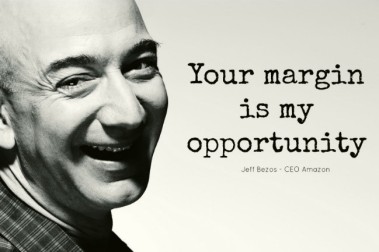Of late, the pharmaceutical industry has been in the news for all the wrong reasons. First, the government intervened to bring in large groups of medicines under the price cap to make them more affordable to the sick. Even before that happened, companies were caught overcharging for some medicines in violation of the prices set by the national price regulator. Recently fixed dose combinations (FDCs or products containing two or more medicines in a single dosage form) were banned en masse by the government. All these decisions caused observers to declare that the free market in pharma had all but failed.
Fixed Dose Combinations (FDCs) – convenient but deadly
Recently, an expert committee found about a 1000 of these products to be irrational in nature which means that they could potentially harm patients who consumed them. Commentators pegged FDCs to constitute nearly 50% of the $15 billion domestic Indian pharma market. It is impossible to believe that such a large market exists without consumer demand to match.
These medicines have been available for years – in some cases, over 30 years. To be sure, this doesn’t make it legitimate. If FDCs have been deemed to be unsafe for patients by experts, then we must accept the verdict. What is wrong is wrong and one should not defend it.
What one should definitely do though, is debate how to make things better. Why were irrational combinations approved? What systemic shortcomings should be plugged to ensure that this doesn’t happen again? What kind of punitive action should be forthcoming?
Rather than engage in such conversation, the discussion in the public domain has been completely a moralistic one. Pharmaceutical companies have been labeled greedy and corrupt. They have been accused of caring nothing for human lives and focusing only on making profits instead.
This is not to absolve companies at all, but what seems to irk some commentators more than anything else is that no laws were broken and so it is difficult to lay the blame squarely on one party. To confound matters, the courts immediately granted stay orders on the ban. This prompted commentators to wonder if companies bent the rules. Why else have state regulators – who approved most of these products – not stood up to defend their case, they ask?
Instead of such conjecture, would it not be more fruitful to understand why this was allowed to go on for so many decades?
Governance and Free Markets
If FDCs were irrational, why were they authorized in the first place? If the rules stipulated that licenses obtained from state regulators be validated by the central regulator, why were there no checks in the system to make sure that was done?
Obviously, there isn’t an appropriate approval system that seeks proper documentation. There is no proper adverse event reporting (AER) system in place that helps gather real-world evidence of the harm caused by such medicines. Absent all these systemic check-points, the government action seems ham-handed and open to moralistic judgment.
This is probably why an informal survey carried out by a leading business daily found that 40% of doctors disagreed with the ban on products they had routinely used in thousands of their patients over many years.
It is common knowledge that the governance system is severely underdeveloped in India. Yet, when a PIL was filed in the Supreme Court of India, the judges threw the case out saying something to the effect that they had bigger priorities to work on! An indifferent judiciary kills free markets.
In this backdrop, does a ban seem like the best solution to the problem? It seems more like a reaction by a hapless regulator to fill the void created by an inefficient judicial system. Yet, there is not a single voice appealing to reform this system. That would have been more logical than moralistic jingoism.
Aside from the lack of science to support the products, the ban is based on the fact that these FDCs aren’t approved by the US-FDA. This is simply because the single medicines used in creating the combinations are often under patent protection and belonged to different companies. It would take extraordinary effort for these companies to forge deals to create such combination products. India does not recognize these patents and therefore Indian companies can easily formulate combination products.
Voice of the patient
Sadly, what began as an exercise to help patients reduce pill burden and increase compliance to therapy ended up in an overambitious industry effort to create products, not all of which were supported by science.
But, has anyone bothered to ask what the patient wants? It would be interesting to examine if patients complained about problems with these products. What happens to people for who a particular combination that worked to relieve cold and fever for years is suddenly pulled off the market? Shouldn’t consumers have a way of lending their voice too?
Despite being morally correct to do so, no commentators called for the formalization of patient bodies that can have a place at the table during such decisions. No one asked if it was right for government to decide what’s right for people. No one asked about personal choice.
On one hand, it is common knowledge that goods with great demand that are banned by governments, find their way to consumers through a parallel marketplace that we commonly call the ‘black market’. The government knows this through its strict regulation on alcohol, narcotics, gold and other such goods. Sadly, it learns nothing. Is it morally right to allow patients to buy low grade medicines off the black market? If the government cannot tell people about legitimate medicines, can we expect them to “protect” citizens from spurious and counterfeit ones?
Corporatization of Free Markets
On the other hand, it goes without saying that exploiting loopholes in the law is definitely not a smart business decision. History has taught us that such seemingly short-term benefits can turn out to be disasters in the medium to long term. Companies considered market leaders and ‘too-big-to-fail’ have disappeared after doing so in the past. Why do executives not learn from history then? Are they evil, scheming Scrooges as they are made out to be?
Perhaps, corporate incentives are completely misaligned. They are too skewed towards profit. While this in itself is not bad, it can encourage risk, recklessness and avarice especially in a system with a grossly underdeveloped governance structure.
What about internal ethics and governance policies of companies? Even if local laws are not stringent about submitting scientific evidence to back up the therapeutic benefit of these products, shouldn’t drug-makers have gathered evidence anyway? It is no excuse at all as observers claim, and rightly so.
Morals and Markets
At the end of the day, whether for moral reasons or economic ones, companies should know that irresponsible behavior undermines the very nature of the free markets that they advocate for. Popular moralistic sentiment mistakes corporate behavior as the epitome of the evils of privatization and the subsequent failure of free markets. The irony is that bans, punitive government action and continued interference prove time and time again that markets are NOT free at all.
Much reform in the space is required to set markets free in the true sense. To argue against free markets by pointing out recent failures is to not understand what free markets truly mean.
Not much can be said if the government is forced to intervene because of reckless corporate behavior. The key question is who will stand up and take the responsibility of breaking this vicious cycle?
Until then, we will misguidedly worry about markets becoming detached from morals instead of using the opportunity to push for reforms that will truly benefit patients. And that is through a free and fair market.


